A record of Czech and Slovak individuals who made their home in Britain and left a legacy here plus those that made it possible for them to do so by supporting them during difficult historic times.
ZIKA ASCHER textile designer
(born 3 April 1910 Prague, died 5 September 1992 London)
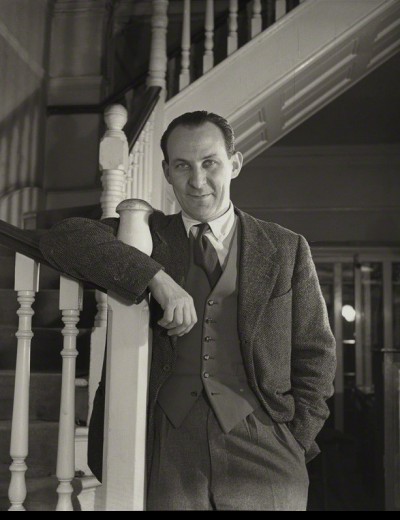
Zikmund Ascher entered the family textile business in Prague before settling in London with his wife Lida in 1939 following their honeymoon in Norway. He signed up for the British Army the following year. In 1942 Zika and Lida set up their own textile company.
After the war Ascher persuaded many artists including Henri Matisse, Henry Moore and Feliks Topolski to design three-foot squares that he printed in limited editions as head scarves, often on rayon because of shortages of other material.
In the late 1950s and mid 1960s Ascher introduced innovative hand-tufted mohair fabrics, cheesecloths and lacy fabrics into his biannual collections for leading European couturiers including Dior.
The ‘mad silkman’ who made Britain beautiful – The Jewish Chronicle (thejc.com)
Exhibition brings Aschers “back to Prague in a style worthy of what they accomplished” | Radio Prague International interview with son Peter
The Mad Silkman. Zika & Lida Ascher: Textile and Fashion – YouTube Prague exhibition
Ascher London is relaunched – Telegraph by his grandson Sam
Ascher textiles online in V&A collections plus individual entries for Zika & Lida
ERICH AUERBACH FRPS photographer
(born 12 December 1911 Sokolov, died London 1977)
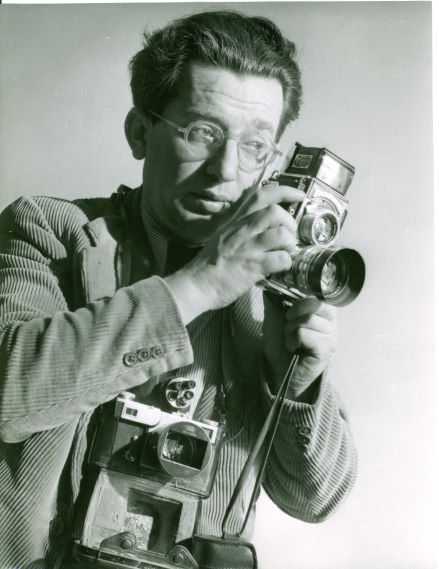
Erich Auerbach was educated in Karlovy Vary and Prague University Collegium Musicum. To help finance his studies he took part-time work as a music critic with the Prager Tagblatt. Eventually Auerbach switched to a career in journalism and photography, though music remained a lifelong passion. With his first professional camera, a present from his father, he proceeded to document the land and people of Czechoslovakia.
In Prague he worked for leading Czech newspapers and his photographs were published around Europe. Auerbach left Czechoslovakia in the summer of 1939, escaping on foot over the border into Poland. From there he used contacts in the British press to help him get to England.
In London he became the official photographer of the Czechoslovak government in exile during the second world war. During this time he wrote in a letter to a friend: “with all its setbacks and eternal struggles, photography is a lovely thing, and I feel a warm satisfaction after such a day’s work.”
After the war he decided not to return to his homeland and settled in London where he married in 1946 and finally gave up his Czech nationality, becoming British in 1947. During this time he was employed as a photographer for the news magazine ‘Illustrated’.
From 1957 until his death he returned to his first love of music and worked as a freelance, photographing most of the great composers, conductors and musicians of the post war era. In 1960 he was enrolled as a fellow of the Royal Photographic Society of Great Britain. In 1971 his first book ‘An Eye for Music’ was published in London. In 1996 a further volume of his photographs, ‘Images of Music’, was produced by the Hulton Getty Picture Collection Ltd., who hold the copyright to Auerbach’s musical archive.
Monica Beaumont (his daughter)
https://www.gettyimages.co.uk/photos/erich-auerbach
The Erich Auerbach collection covers classical music, jazz, ballet and opera from 1945 – 1977 focussing on action shots of personalities and performances rather than staged and posed studio portraiture.
Erich Auerbach Wall Art (photos.com)
FRANTA BĚLSKÝ sculptor
(born 6 April 1921 Brno, died 5 July 2000 Oxfordshire)
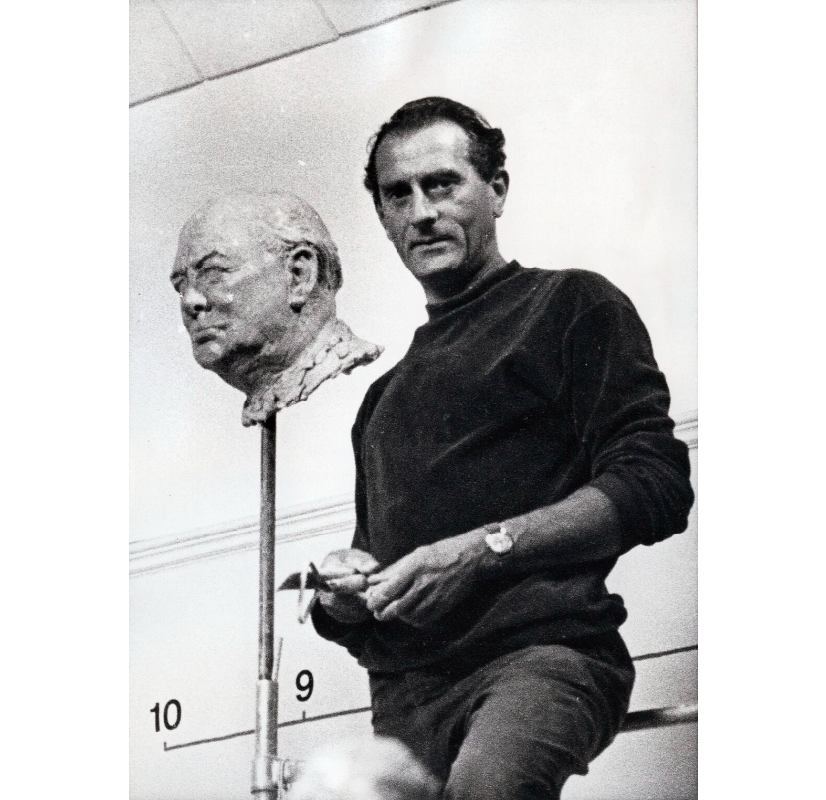
Son of the eminent Jewish economist, Joseph Bělský, Franta moved with his family to Prague as a small child and grew up there. His father was, perhaps not surprisingly, not keen on the artistic aspirations of young Franta, even when he won first prize in a student sculpture competition aged sixteen. Nonetheless, in 1938, he was prevailed upon to allow Franta to be admitted to a commercial art school in Prague, only to be overtaken by the German occupation of Bohemia and Moravia six months later. The family fled to England, and Franta re-started his studies, at the Central School of Arts & Crafts in London from which he won a place at the Royal College of Art.
The Second World War broke out in September 1939 and young Franta immediately enlisted with the Czech units which were beginning to be formed in England. His was sent to France in May 1940, but with the collapse of French resistance his Czech unit made its way south and, via Gibraltar, returned to England a month after Dunkirk. The Czech units gathered in Cholmondely Park, Cheshire, where they were reviewed by Winston Churchill. Franta records scrutinising the Prime Minister closely and resolving, when the time came, to sculpt him as he had seen him that day.
During the years before preparations for the Normandy invasion, Franta was sent by the Czech Amy to continue his studies for two terms at the Royal College of Art under Richard Garbe. In 1943 he exhibited at The Royal of Arts, Weasel which he had carved from Jarra wood carried round in his kitbag. It was then that he met Margaret Owen whom he married shortly before leaving for Normandy. Initially serving as a gunner under Montgomery, he transferred to the American Army, serving under Patton, and ended the war back in Czechoslovakia.
Joined by Margaret, they set up home in Prague where he recommenced his studies, now at the Academy of Fine Arts under the relief sculptor Otakar Španiel. From this period dates the Paratroop Memorial which he executed in Španiel’s studio (1947) and the uniface Zátopek medal commissioned by the Czech Army (1948). With the communist takeover of Czechoslovakia that year, Franta and Margaret hurriedly returned to London where he resumed his studies at the Royal College, this time under Frank Dobson and John Skeaping. Before graduating, Franta exhibited at the Royal Academy, in 1949, his posthumous portrait of Jan Masaryk.
With Lesson, executed for the London County Council in 1955 and Joy Ride for Stevenage New Town Centre (1958), Franta established a strong position to satisfy the admittedly waning demand by local government patrons for monumental figurative compositions. He was also developing entirely abstract forms for fountains, above all the monumental composition created for the European Shell Centre, South Bank, completed in 1961. In all his compositions Franta was determinedly anti-elitist with a deep belief in what he termed the “social” role of his sculpture.
Franta’s excellent relations with his sitters for portraits are borne out by the portrait sculptures from life which he executed of four generations of the Royal Family and his selection for a sequence of highly prestigious naval portraits culminating in the full-length bronze figure of Earl Mountbatten overlooking Horse Guards Parade (1983). The opportunity to work up his memories of Winston Churchill in 1940 came to fruition with the commission by Westminster College, Fulton, Missouri, for an over-life-size bronze figure close to the spot where Churchill had delivered his ‘Iron Curtain’ speech it was unveiled in 1971. Franta also sculpted the half-length figure outside the British Embassy in Prague (1992).
The Society of Portrait Sculptors went into hibernation in 1984, but it was revived by Franta and others in 1996, with Franta as its President. Margaret had died in 1989, and the ever closer relationship with his fellow student from Prague, Irena Sedlecká [see separate entry] led to their marriage in 1985. He remained active in his studio almost to the end..
Peter Cannon-Brookes (full version in Mallams catalogue – see below)
Franta Belsky | Thames News | 1983 Lord Mountbatten statue
Franta & Winston, a documentary – America’s National Churchill Museum
Belsky’s milestones for the 20th century BCS Review Aug-Sept 2000 p 3
Franta Belsky The Guardian obituary
Papers of Franta Belsky Henry Moore Institute Archive
The Franta Belsky and Irena Sedlecka Atelier Sculpture sale – 25th April 2017 (Mallams Oxford)
WALTER BOR CBE town planner
(born 14 February 1916 Vienna, died 4 October 1999 London)
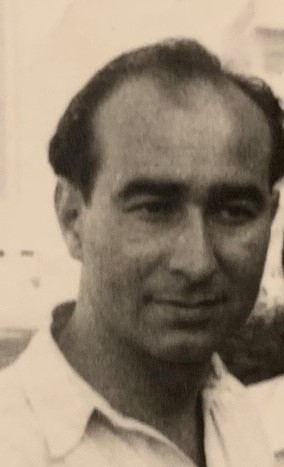
Born Walter Buchbinder, he studied at the Prague Academy of Arts, Architecture and Design under Otakar Novotný who designed the Mánes building. In 1939 he escaped to England with the help of his friend Herbert Lom [see separate entry] who raised money for his visa and arranged a scholarship for him at the Bartlett School of Architecture in London which relocated to Cambridge University where Bor studied until 1944. During the war he worked as an aircraft mechanic and served in the Czechoslovak army in exile reaching Plzeň where he was demobilised. Returning to Prague he found the family flat had been destroyed and his parents and sister had not survived. Bor completed his Czech qualification before returning to England in early 1946 where he had a wife and son.
In London, Bor became an architectural assistant and completed an intensive ex-servicemen’s course in town planning run by the Architectural Association. He then worked with Anthony Chitty to create a plan for Farnham in Surrey. In 1947 he joined London County Council as a junior planner working on the Stepney-Poplar Reconstruction Area. By 1958 he was assistant senior planning officer for the renewal and redevelopment of the East End as a whole before being appointed deputy planning officer in 1960. Bor also gained a degree in architecture as an external student and became a member of RIBA.
He then moved to Liverpool City Council in 1962 as chief planning officer including transport. Bor developed both a structural plan as a long-term framework with a set of policies and also a development plan for the city centre for implementation. The aim was to improve the image of Liverpool which had been badly damaged during the war and attract inward investment. Sir Keith Joseph, Minister of Housing and Local Government, also appointed him to the national Planning Advisory Group (PAG).
In 1966 Bor was invited by the architect Richard Llewelyn-Davies to became the fourth partner in a private practice to build up its planning activity. The firm developed a master plan for a new city, Cuidad Lossada, in Venezuela for 400,000 people including zones for “ranchos” that were provided with essential infrastructure. He then became involved in a plan which won the Milton Keynes Development Corporation’s competition for the site of a new town of 250,000 people. Bor later said: “they wanted a 21st century new town, not the end of the 20th century. So we had to think ahead to what kind of changes there will be, particularly in industry and the increasing role of knowledge, computerisation and so on. This was way ahead of contemporary thinking at the time and it was one of the things which we were very keen on”.
In 1970 his book The Making of Cities was published and Bor was elected president of the Royal Town Planning Institute for one year. During the 1990s he planned new towns and cities in China and was consulted about a plan for Prague.
A strategy for Prague by Walter Bor, BCSA Newsletter
Walter Bor obituary The Guardian by Jonathan Glancey
Moving story of two pals who fled from the Nazis comes to the Fringe – The Sunday Post
Walter Bor – Planning in Prague: Past, Present & Future – YouTube
Walter Bor interview National Life Stories Collection: Architects’ Lives 1997
KAREL BRUŠÁK broadcaster, academic
(born 2 July 1913 Prague, died 3 June 2004 London)
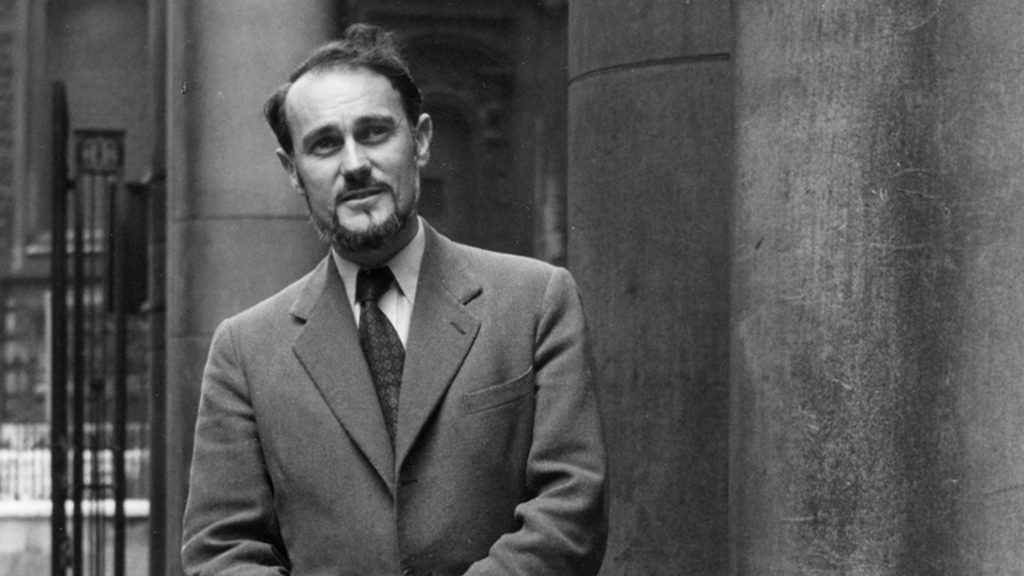
Karel Brušák studied at Charles University faculty of philosophy under Jan Mukarovsky who advised him to specialise in the theory of the theatre and introduced him to the Prague Linguistic Centre. As a young man he sympathised with communism and went to Spain during the civil war. In 1938 after the Munich Agreement Brušák took up a scholarship in France to study anthropology at the Sorbonne. He escaped to Britain in 1940 where he served in Air Raid Precaution building shelters and later helped during air raids. In 1942 Brušák became an editor and commentator in the BBC’s broadcast service for Czechoslovakia and also joined the press department of the Czechoslovak government in exile.
After the war Karel Brušák remained in Britain, became a British citizen and continued to work at the BBC. He became an external student at London University and obtained an MA in Czech and French. In 1962 Brušák was appointed associate lecturer teaching Czech and Slovak language and literature in the Slavonic department at Cambridge University where he remained until its closure in 1989.
Among his students was Greg Hands MP, who remembered his teacher in a debate about the BBC World Service in 2008. “The man who taught me Czech at Cambridge was the late Karel Brušák, who frequently broadcast on the Czech service. At various times, he dominated the Czech language service. He worked as a news commentator; he wrote original radio plays and adaptations, and a satirical review about communist Czechoslovakia; and he reviewed books, films, theatre and the latest achievements of science and technology. In every sense, he was a genuine all rounder. I lived in Prague for a summer during communist times, and the Czech service was invaluable in allowing me to keep up with the outside world. Indeed, it was a rather strange experience being able to listen to one’s own teacher on the radio almost every day.”
BCS Review interview with Zuzana Slobodova
TREVOR CHADWICK Czech Kindertransport
(b 22 April 1907 Godalming, died 23 December 1979 Southampton)
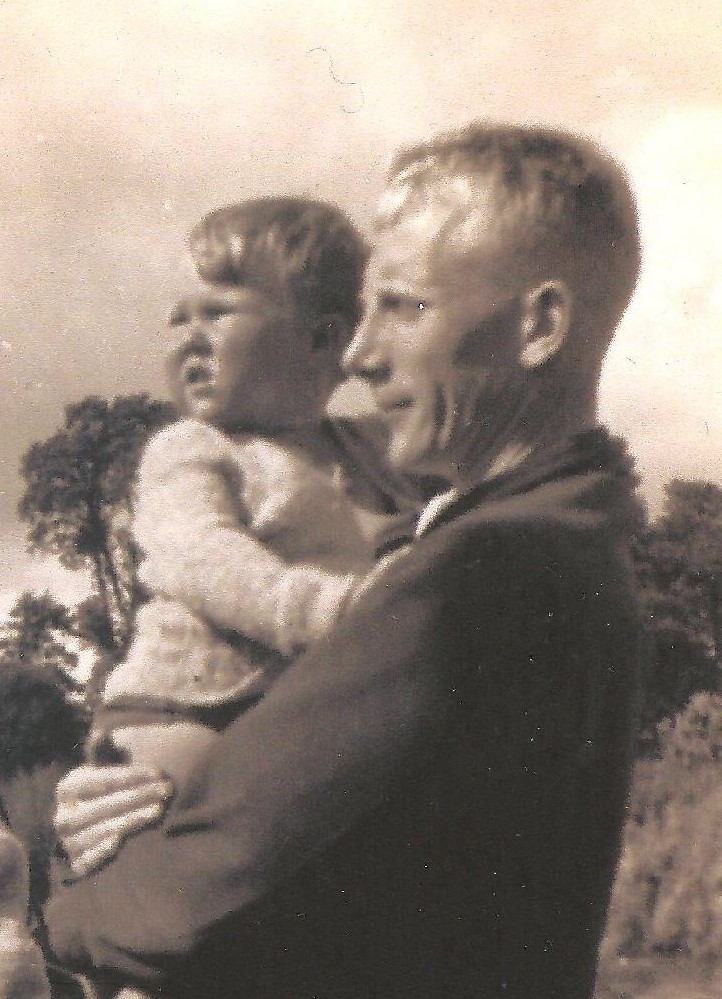
Following the Nazi occupation of the Sudentenland in September 1938, a British committee for Refugees from Czechoslovakia (BCRC) was set up to help refugees to come to Britain.At the time Trevor Chadwick was teaching Latin at Forres School in Swanage, a private preparatory boys’ school set up by his father. The school decided to sponsor two boys and paid for their flight and accommodation. In January 1939 Chadwick went to Prague to collect them; there he met Nicholas Winton and offered his help to organise a Czech Kindertransport. Together they set up a children’s section of the BCRC which Chadwick ran from Prague while Winton returned to England to make the necessary arrangements with the Home Office. This was made possible by a 1938 Act of Parliament, which permitted entry to the UK of refugee children under the age of 17 on condition that £50 per child was deposited by a sponsor and a guarantee of care and maintenance.
Chadwick met parents, organised five trains and looked after the children before their departure from Prague’s main railway station. The first group of 20 children departed by plane in early 1939. After the German Army occupied Czechoslovakia in March of that year, air transport came to a halt. In Chadwick’s own account*: “By then I had a hundred or so children waiting to be sent to England, most of them in odd accommodation in Prague schools, a score in Bratislava and so on … A member of the Czech cabinet lent me an office and I had two young helpers. The whole days from 7 to 7, with twenty minutes for lunch, were taken up with interviewing, filing and writing letters to the guarantors.” Attention had primarily to be paid to the wishes of the latter. “The majority stipulated girls seven-ten [years of age] and if possible fair. Boys of twelve and upwards were hard to place. Girls were in the majority on the transports.” He also had to deal with Nazi officials to ensure that they would allow the children to leave. When the Home Office failed to supply the necessary documents, Chadwick found someone to forge them. By June 1939 his personal situation had become too dangerous and he left Prague.
After the war, Chadwick went to Norway to recover from tuberculosis and spent most of his life there. He founded a small publishing company that became Oslo University Press and worked there until his retirement in 1975, when he returned to England to live in Southampton.
The Trevor Chadwick Memorial Trust has raised funds for a statue to honour him and the work he undertook with the Kindertransport. It is located close to a children’s playground renamed the Chadwick Park overlooking Swanage Bay in Dorset.
William Chadwick, his youngest son, published The Rescue of the Prague Refugees 1938-39, which includes an account of his father’s involvement. The paperback edition can be ordered by sending an email to jacqueline.chadwick@yahoo.co.uk (£16 including postage). It is also available on Kindle.
* We Came as Children: a Collective Autobiography, edited by Karen Gershon.’ Victor Gollancz, London, 1966
Active Goodness: the true story of how Trevor Chadwick, Doreen Warriner & Nicholas Winton saved thousands from the Nazis. Edward Abel Smith, 2017
JAN & VLASTA DALIBOR puppeteers
(both born in Brno May 1921, Jan died 23 July 2013, Vlasta 21 February 2016)
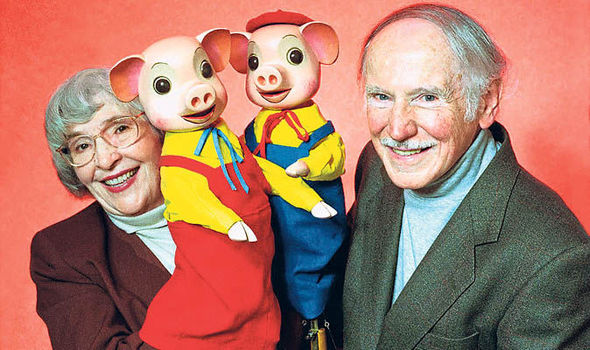
In 1948 Jan and Vlasta arrived in Britain as refugees and settled in Yorkshire. In his spare time Jan began making wooden marionettes. Vlasta suggested he make some in the shape of pigs, a Czech symbol of good luck. They began performing with their puppets in 1951 and were spotted by a TV producer in 1956. The Dalibors made their first TV appearance that year on a BBC talent show with the two piglets.
The squeaky-voiced duo first appeared on the BBC in 1958 complete with their own fictional TV station PPC TV, which featured them performing sketches and singing songs. Their slot just before the early evening news brought them an adult as well as a children’s audience. Over 200 episodes were broadcast attracting an audience of 15 million at the height of their popularity.
The Dalibors created a total of 50 puppets besides Pinky and Perky. There was Ambrose Cat, Horace Hare, Basil Bloodhound, Morton Frog, Conchita the Cow, Bertie the baby elephant and the sultry Vera Vixen, plus an endless supply of mice.
In 1968 the show moved to Thames Television for two more series. The Dalibors retired in 1973 and sold the rights to their characters which were revived in 2008 for a new CGI-animated television series on CBBC with 52 episodes.
Jan & Vlasta Dalibor with Pinky & Perky 1991 – YouTube
DORRIT DEKK designer
(born Dorothy Karoline Fuhrmann 18 May 1917 Brno, died 29 December London 2014)
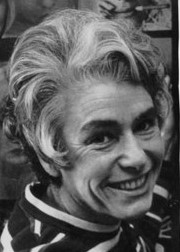
Dorrit trained at the Kunstgewerbeschule, Vienna from 1936 to 1938 where she was taught by Otto Niedermoser, the stage designer, and contributed to designs for the theatre and for film director Max Reinhardt. Following the Anschluss in 1938 she escaped to London and took up a place at the Reimann School of commercial art (which had recently relocated itself from Berlin) through a scholarship arranged by Niedermoser and specialised in graphic design.
Following the closure of the Reimann School in 1940 she joined the Women’s Royal Naval Service (Wrens) and became a radio intelligence officer listening to U-boat communications. As a Y-station ‘listener’ Dorrit intercepted coded messages sent to German naval forces; her hand-written transcripts were then sent to Bletchley Park for deciphering.
After the war, she joined the design studio of the Central Office of Information, working under Reginald Mount. Adopting the name Dorrit Dekk, she designed numerous government posters including the iconic Ministry of Health posters ‘trap the germs by using your handkerchief’.
In 1950 she established herself as a freelance designer. Dorritt often used collage in her design and advertising work for clients that included London Transport, British Rail and the Post Office Savings Bank as well as P&O, Penguin Books and Tatler magazine. As a designer for the 1951 Festival of Britain’s Land Travelling Exhibition she created the mural ‘British Sports and Games’, subsequently displayed in cities across the Midlands and the north of England. Dorrit was made a Fellow of the Society of Industrial Artists in 1956.
A woman who never gave up by Pavla Hind
A personal recollection by Dr Jana Buresova
Festival of Britain Dorrit Dekk and the Land Traveller
Dorrit Dekk obituary The Guardian
University of Brighton design archives
Designing Women | RUTH ARTMONSKY includes a chapter about Dorritt
LORD DUBS campaigner for refugee rights
(born Prague 5 December 1932)
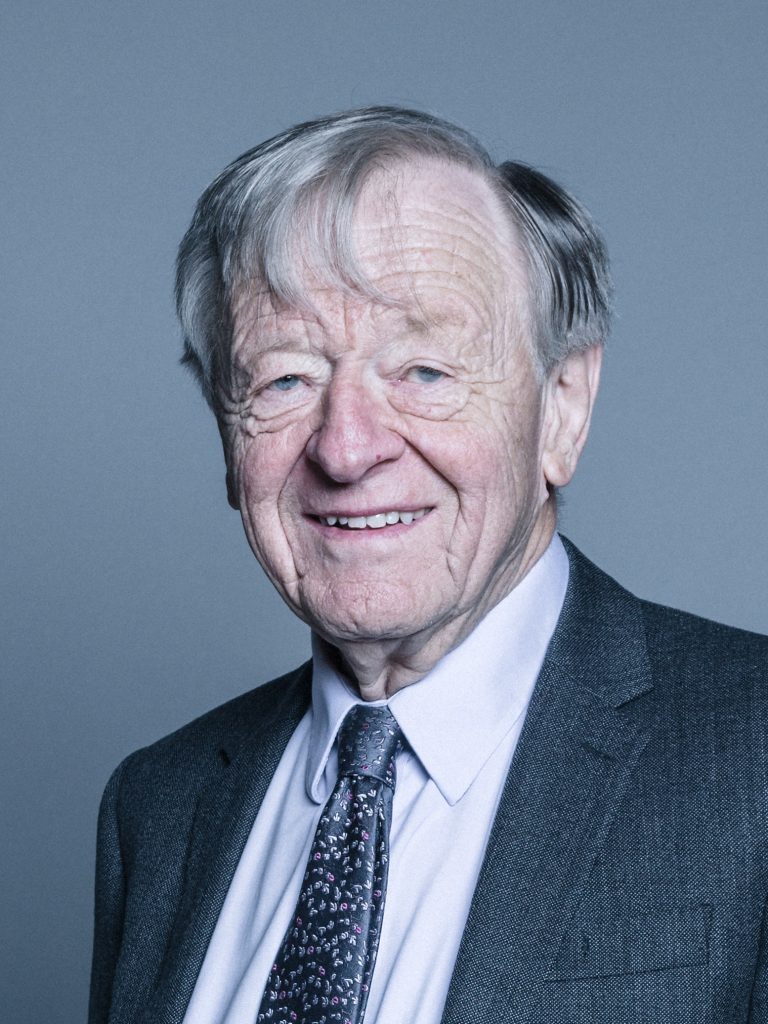
Official portrait for Lord Dubs – MPs and Lords – UK Parliament
Alfred Dubs was six years old in June 1939 when he arrived in London on a kindertransport arranged by Sir Nicholas Winton (see separate profile). He was met at Liverpool Street station by his father and on 31 August that year his mother managed to join them. During the war Dubs attended a boarding school in Llanwrtyd Wells in south Wales that was run by the Czechoslovak government in exile.
After attending Cheadle Hulme School and the London School of Economics and Political Science, he gained experience working in local-government health services. From 1979 until 1987 he was the Labour MP for Battersea South and then Battersea and had a large immigration and asylum case load. As director of the Refugee Council from 1988 to 1995 he dealt with the Bosnia crisis, government policy and programmes. In 1994 he was appointed a Labour life peer and became a member of the House of Lords.
From 1997-9 he was a minister in Northern Ireland in the run-up to the Good Friday Agreement and the establishment of the devolved administration, working as part of Mo Mowlam’s team.
Over the years he has lobbied tirelessly on behalf of refugees and asylum seekers. In 2016 hemade headlines for what is known as the ‘Dubs Amendment’ to an immigration bill that offered unaccompanied refugee children safe passage to Britain.
In 2020 he once again proposed an amendment which would give safe passage and sanctuary to unaccompanied children in Europe to come to the UK to join a family member already seeking refugee status. It was supported by the House of Lords but defeated in the House of Commons.
In 2021 with the restoration of his Czech citizenship, he became the first Czech-British member of the House of Lords.
Lord Dubs’ speech at the BCSA/CBCC dinner in 2022 is available on the BCSA YouTube channel Keynote speech by Lord Alfred Dubs – YouTube
Sir Alf Dubs (ajrrefugeevoices.org.uk)
ARTHUR FLEISCHMANN sculptor
(born 5 June 1896 Bratislava, died 2 March 1990 Tenerife)
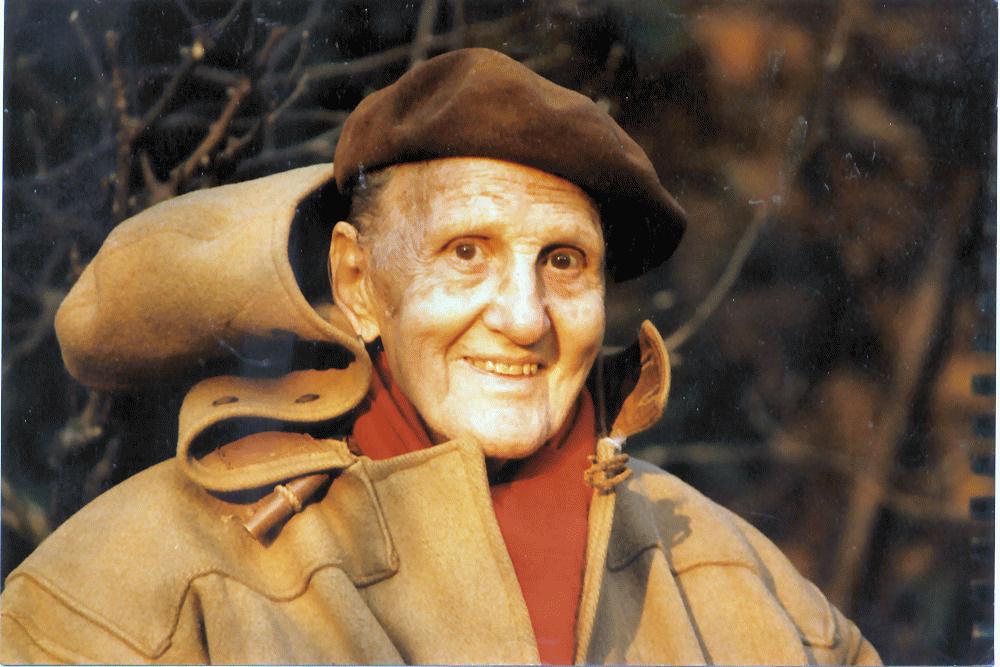
Arthur Fleischmann studied medicine in Budapest and Prague before turning to sculpture and winning a scholarship to the Master School of Sculpture in Vienna. In 1937 he travelled to South Africa before spending two years in Bali where he converted to Catholicism. The forms of traditional Balinese dancers became a lifelong influence on his work.
In 1939 he fled from Japanese invasion to Sydney and was elected a member of the Society of Artists in Sydney. Fleischmann became a founder member of an artistic colony, the Merioola Group, sculpting portraits of prominent Australians. His two best-known works from this period are the 1946 wishing tree memorial I Wish for the Royal Botanic Gardens in Sydney and the Bronze Doors on the Mitchell Wing of the State Library of New South Wales. His last work, a Perspex water sculpture Tribute to the Discovery of DNA (1990), is also installed in the library.
In 1948 Fleischmann returned to Europe and settled in London. He married his wife Joy in 1955 and their son, Dominique, was born in 1961. Fleischmann produced sculptures of personalities of the day including the opera singer Kathleen Ferrier, the actress Joan Collins and the ballerina Svetlana Beriosova. His bust of Trevor Howard is in the National Portrait Gallery. Other later portrait subjects included the conductor Sir Charles Mackerras, the ballerina Doreen Wells and Barry Humphries.
Fleishmann pioneered the use of Perspex in sculpture, including some notable public pieces. In 1956, the Pacific Steam Navigation Company (PSNC) commissioned The Birth of Aphrodite for their ship Reina del Mar. Fleischmann carved the piece from a half-ton block of clear Perspex built up from laminated sheets. In 1963, he featured in a British Pathé newsreel about Perspex sculpture. [see link below] For the 1970 World Expo in Osaka he created a Perspex fountain for the British Pavilion, entitled Harmony and Progress.
In 1977 his Crystal Crown, carved out of a massive block of acrylic, was unveiled by Queen Elizabeth II at St Katharine Docks in London, in celebration of her Silver Jubilee. The acrylic block had originally been commissioned by Stanley Kubrick as the alien monolith in the film 2001: A Space Odyssey but he rejected it in favour of a piece made from black basalt.
Fleischmann’s work was influenced by his Roman Catholic faith; he is the only artist to have sculpted four popes from life. His Tryptych of the Holy Rosary was exhibited in the Vatican Pavilion at the Brussels World Expo in 1958: it consists of three clear Perspex panels carved in relief.
In 2001, the Arthur Fleischmann Foundation was formed. Working with the Múzeum Mesta Bratislavy and the City of Bratislava Council, the Foundation helped set up a permanent museum in the house at 6 Biela ulica, Bratislava where Arthur Fleischmann grew up. He is also commemorated with a plaque at his London home, 92 Carlton Hill, Westminster and since 2004 there is a plaque at Favoritenstraße 12 in Vienna (now a hotel), where he lived and worked from 1934 to 1938.
Perspex Sculpture – British Pathé (britishpathe.com)
BBC News | ARTS | Sculptor’s spirit returns home
A&A | Arthur Fleischmann: travelling sculptor
OTTO HELLER cinematographer
(born 8 March 1896 Prague, died 19 February 1970 London)
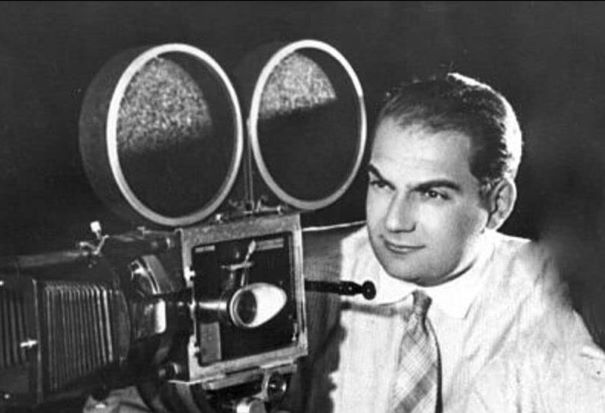
As a teenager Otto Heller was a projectionist at the Lucerna cinema in Prague. During World War I, he was a field cameraman on the Italian front and then transferred to a military film laboratory in Vienna where he assisted with filming the funeral of Emperor Franz Joseph. After the war, he worked as a cinematographer in Czechoslovakia on 30 silent and 40 talking pictures.
In 1938 Heller left for England and became a British subject in 1945. During his career in the UK he made 250 films including Richard III directed by Laurence Olivier and the Ealing comedy The Ladykillers (both 1955), Peeping Tom (1960) directed by Michael Powell, Victim (1961) starring Dirk Bogarde, the Morecambe and Wise vehicle That Riviera Touch and Alfie starring Michael Caine (both 1966) and three Len Deighton spy-novel adaptations that starred Caine as British agent Harry Palmer – The Ipcress File (1965), Funeral in Berlin (1966) and Billion Dollar Brain (1967).
BFI Screenonline: Heller, Otto (1896-1970) Biography
JOSEF JOSTEN (Stein) MBE, journalist, publisher and campaigner
(born 25 March 1913 Prague, died 29 November 1985 London)
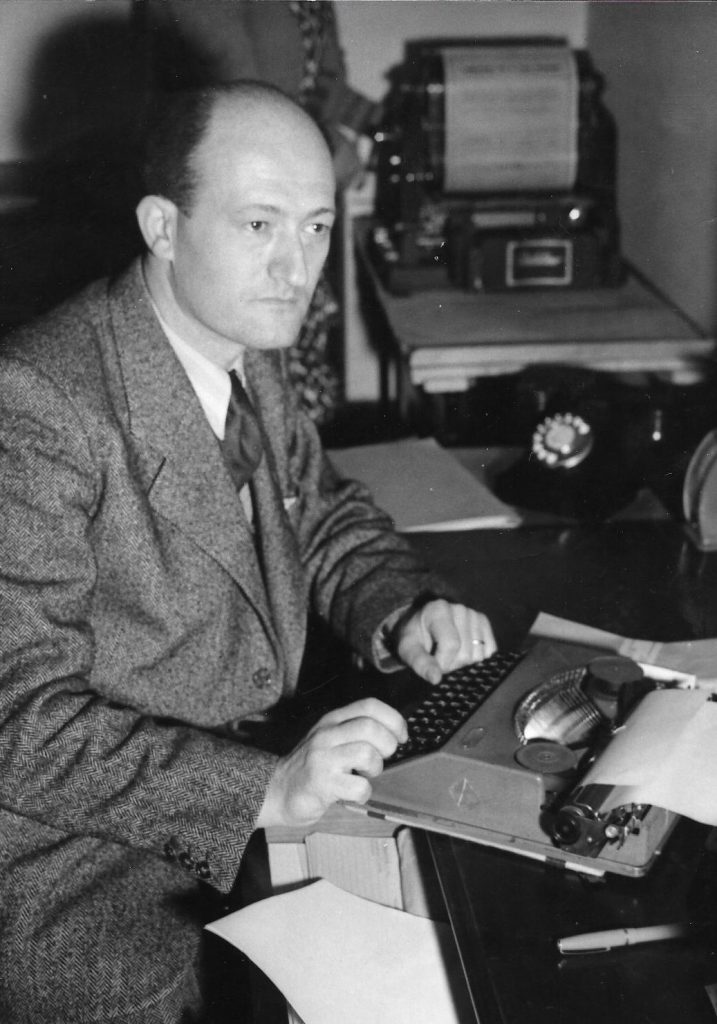
In his late teens Josef became interested in journalism, writing articles for several newspapers and journals using the pseudonym Josten (short for Josef Stein), eventually adopting this as his surname. In 1938 he joined the staff of the national daily Lidové Noviny, working alongside the author and playwright Karel Čapek.
Following the Nazi occupation of Czechoslovakia in March 1939, he joined an underground organisation helping young Czechs escape and join the Allied forces. Josten eventually had to escape himself through Slovakia and Hungary to Yugoslavia, where he received help to join the French army in Lebanon, before being transported to France.
As the Nazis advanced through France, he assisted with the evacuation of the Czechoslovak government-in-exile and its documents to Britain, finally boarding a British ship on 24 June 1940 and sailing to Liverpool. In England, Josten came under British army command and trained with other Czech and Polish escapees in Cholmondeley Park and Walton Hall. One of his fellow trainee soldiers was Franta Bělský [see separate entry] who provided illustrations for his propaganda booklet To Ann in America (the foreword was written by Jan Masaryk). In 1943 Josef married Patricia Giles, the daughter of a British army officer. In 1944, as a signals officer (with the rank of Lieutenant) in the Czech brigade, he was sent to France for active service.
At the end of the war, he served with the Supreme Headquarters Allied Expeditionary Force (SHAEF) in Luxembourg as a news broadcaster from 1945-7. Patricia briefly became an announcer with Radio Luxembourg. During this time, Josten became the only Czech to witness the remains of King John the Blind of Bohemia when his coffin was being recovered from Germany to Luxembourg.
In May 1947 they moved to a flat in Prague [see photos of Patricia in pdf link below] Josten obtained a post in the Foreign Ministry as a press assistant to the Foreign Minister, Jan Masaryk, whom he had known in exile in England. Following the communist coup in February 1948, he was dismissed from his post after transmitting the last uncensored message from President Beneš to his diplomats abroad. Patricia was able to leave immediately by plane but Josef had to escape by walking through the Šumava forest with a group of friends to West Germany.
Arriving in England in May 1948, Josten set up a news agency, the Free Czechoslovak Information Service, to report on conditions behind the “Iron Curtain”. He published weekly bulletins in both Czech Čechoslovák v zahraničí (1949-1967) and English Free Czechoslovak Information, FCI (1949-1978). He also published an autobiographical book Oh, My Country with a detailed account of the 1948 coup based on his experiences within the Foreign Ministry.
During the 1960s and 70s Josten provided assistance to a number of asylum seekers from Central and Eastern Europe, for which he gained a reputation as “the Czech Scarlet Pimpernel”. In the late 1970s, Josten handed over the FCI bulletin to Geoffrey Stewart-Smith of the Freedom Association. This allowed him to focus his attention on the situation of political prisoners in Czechoslovakia, including Václav Havel. He set up the UK Campaign for the Defence of the Unjustly Prosecuted and in collaboration with Father Jan Lang [see separate entry] the European Liaison Group, an anti-Soviet campaign group for Eastern and Central European exile communities.
In March 1985 Josten was awarded an MBE for “services to journalism and publishing”. In 1995 Patricia Josten was invited to Prague Castle to receive the Czech Medal of Merit 1st class from President Havel in posthumous recognition of Josef’s work for freedom.
Patricia Josten in Prague 1947 courtesy Martin Josten (her son)
Personal reflection by Martin Josten and interview with the Czech Ambassador, Marie Chatardová here
Josef Josten collection Palacký University Olomouc, Centre for Modern Exile Studies
Josef Josten, Czech Heritage Papers, University of Nebraska The collection consists of personal papers including correspondence, photographs, various subject files, news clippings, and newspapers. The materials relate mainly to his work as a journalist during and after World War II.
European Liaison Group archive at the LSE
JAN KAPLICKÝ architect
(born 18 April 1937 Prague, died 13 January 2009 Prague)
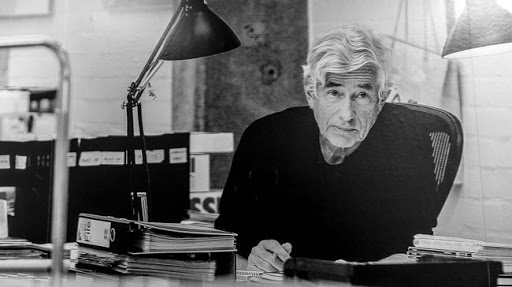
Kaplický was born in Prague in 1937 to Josef Kaplický, artist and sculptor, professor at the Prague Academy of Arts, Architecture and Design and Jiřina Kaplická (Florová), illustrator. The family lived in a house at Prague Ořechovka. Jan attended schools on Národní, Charvátová and Panská in the Prague centre and at Prague Pohořelec.
From 1956 and 1962 Jan studied architecture at the Academy of Arts, Architecture and Design in Prague. He opened his own one-man design studio in Czechoslovakia between 1956 and 1968 working on several private commissions including a Franz Kafka plaque and design for a house and studio for František Dvořák in Braník. In September 1968 Kaplický escaped to Britain after the Soviet-led invasion of Czechoslovakia.
Kaplický settled in London and found work with Denys Lasdun and Partners from 1969 to 1971 working on the construction drawings of National Theatre. He then joined the studio of Richard and Su Rogers designing an extension for Design Research Unit. From 1977 until 1983 Kaplický worked at Foster Associates mainly on developing the design for the Hongkong and Shanghai Bank in Hong Kong. In 1969 Jan met Eva Jiřičná whom he had already known from Prague. They lived and worked together until 1979.
In 1979, together with a Yorkshireman, David Nixon, he established his own practice, Future Systems. In 1991 Jan married Amanda Levete who also became his professional partner. In 2007 following his divorce with Amanda Jan married Eliška Fuchsová in Prague.
Future Systems designed and built the Media Centre at Lord’s Cricket Ground in London (1994-99), Floating Pedestrian Bridge in London Canary Wharf (1994), houses in London and Pembrokeshire, store fronts and interiors in London, Paris, Milan, Tokyo and New York, the Selfridges Department Store in Birmingham (1999) and the Ferrari Museum in Modena (2004-12). In 2007 the practice won the National Library Competition in Prague, which remains unbuilt till the present time. In 1999, in addition to several important awards already received, Future Systems won the prestigious Stirling Prize for the Media Centre building.
Jan also taught at the Architectural Association in London between 1982 and 1988 and lectured widely at many schools and universities throughout the world. Future Systems exhibited their projects at numerous venues during the practice’s existence. Jan published a number of influential books such as For Inspiration Only, More For Inspiration Only, Sketches, Confessions, and Czech Inspiration. Jan died in Prague on January 14, 2009.
Ivan Margolius
The refugee who made his mark on English cricket BCS Review by Hugh Oxlade
Jan Kaplický a Czech giant in Britain BCS Review by Milan Kocourek
Radical architect Jan Kaplický dies The Guardian
Jan Kaplicky Drawings – Design Museum Shop
Major new book commemorates “genius designer” Jan Kaplický | Radio Prague International
Sir FRANK LAMPL businessman
(born 6 April 1926 Brno, died 24 March 2011)
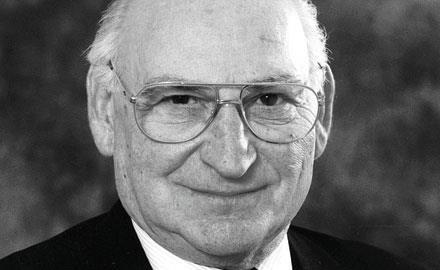
As a teenager Frank Lampl was deported with his family, first to Terezín and then to Auschwitz. By the end of the war he had been made a slave labourer in an underground BMW factory in Munich and transferred to Dachau, from where he was liberated in 1945.
Following his return to Czechoslovakia he was imprisoned by the communist regime as a “bourgeois undesirable” and for three years worked in the Jachýmov uranium mines. Lampl was released in a general amnesty after Stalin’s death in 1953. Given a choice of mining or construction, he chose the latter and rose to become managing director of the state-owned construction company Pozemní Stavby Ostrava. In 1968 following the invasion of Czechoslovakia, Lampl and his wife left to visit their son Thomas who was studying in Oxford and did not return.
Settling in London, Lampl found work in construction before joining Bovis as a project manager in 1971 aged 42. By 1974 he had become managing director of Bovis Construction Ltd and following the formation of Bovis International in 1977, its managing director. From 1985 until his retirement in 1999 Lampl was chairman of the Bovis Construction Group.
After the Velvet Revolution, Frank Lampl set up a Czech operation and Bovis contributed to several major Czech projects including the Czech Technology Park in Brno.
Sir Frank Lampl obituary The Guardian
Sir Frank Lampl’s exceptional life – Construction Manager (constructionmanagermagazine.com)
Father (Otec) JAN LANG priest
(born 20 June 1920 Rajhrad, Moravia, died 21 March 2007 London)
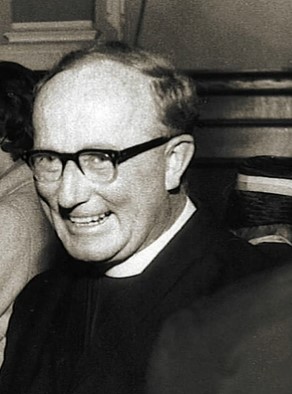
Jan Lang studied at a Benedictine college in Moravia and then joined the Jesuits to become a theology student. After Czechoslovakia was occupied in 1939 the Nazis closed many institutions; he moved to Prague to continue his studies. In 1944 Jan was arrested together with other Czech students and sent to Terezín where he nearly died from typhus.
After the war Jan Lang was sent to London to continue his studies and was ordained on 8 September 1947. Following the communist coup in Czechoslovakia in 1948, many Czechs and Slovaks, then in Britain, opted to stay and others soon arrived as refugees. From 1949 he became their spiritual leader and a formidable organiser of the exile community not only in its religious life but also in its welfare provision. In September that year permission was given to conduct regular Czech services in the Jesuit chapel in Mount Street attached to Farm Street Church which was also used for special occasions. Mount Street was Father Lang’s home with a room that was also used for social gatherings after services by his community. He conducted many weddings and baptisms in the chapel and attended funerals of his compatriots.
A Saturday school was established for teaching Czech to children up to the age of 12 years which also organised summer camps in St Mary’s Bay, Dymchurch. In 1957 a house (St Wenceslaus) in Folkestone was acquired to offer Czechs and Slovaks in exile a self-catering facility for convalescence and holidays. A major step was taken in 1964 with the purchase of a building named Velehrad in Notting Hill. Father Lang had an office there and a variety of exile groups used the reception rooms for meetings and social events. The rest of the house became a permanent home to a number of elderly exiled Czechs and Slovaks. Successive waves of exiles found their way there, including many students who were in Britain at the time of the Soviet-led invasion of Czechoslovakia in August 1968.
After the Velvet Revolution in 1989, Father Lang took great pleasure in visiting his homeland again and meeting relatives after such a long period of separation. In 1991 President Vaclav Havel awarded Father Lang the Order of T. G. Masaryk. The office in the Velehrad house continued to be the base for Father Lang’s spiritual, social, welfare and political activities.
Velehrad, the charity Father Lang founded, continues to provide spiritual, social and welfare support to the Czech and Slovak community in the UK. The trustees of the charity sold the house in Notting Hill in 2013 and acquired a larger and more suitable property in Barnes also called Velehrad. Czech language classes for children and adults take place there and mass is celebrated every month by visiting Czech priests. The large house and garden serve as a meeting point for the Czech and Slovak community and many educational, cultural, social and political events and celebrations take place there.
Ludmila Stane, Milan Kocourek
Czech TV 30 minute video in Czech – Otec Lang reflects on his life and work at Velehrad
BCS Review obituary by Milan Kocourek
A personal recollection by Jana Buresova
HERBERT LOM actor
( born 11 September 1917 Prague, died 27 September 2012 )
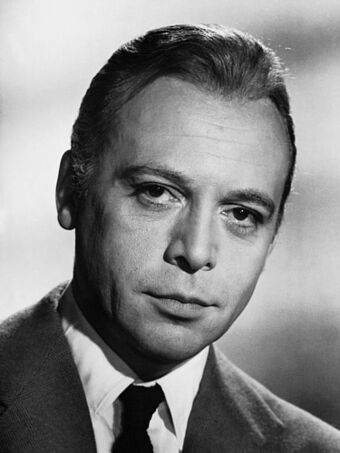
Born Herbert Charles Angelo Kučačevič ze Schluderpacheru, he studied philosophy at Charles University where became involved with and eventually ran the university theatre. Between the stage and his studies he also worked part-time at a film studio as an extra, adopting the name Lom which means quarry in Czech. His first credited role was in a 1937 feature film Woman Under A Cross. A film, as he recalled much later in an interview in London, earned him the first bad review when a Czech critic decided that “ newcomer Herbert Lom is no asset to our screens”. Lom proved him wrong but was self- deprecating about his craft. “I’ve always been an ugly frog but I’ve not done too badly. I’m not tall, dark or handsome, so I had to learn to act. I had nothing else to sell.”
He left for Britain in 1939 before Hitler invaded Czechoslovakia. During the war in London he worked for the Czech and German section of the BBC reading news and propaganda relayed across occupied Europe. Lom first appeared in a British film in 1942 when he played Napoleon in Carol Reed’s The Young Mr Pitt a role he would reprise twice more during his career: in King Vidor’s War And Peace in 1956 and for a triumphant 1975 return to the West End stage after an absence of 20 years in Betzi.
His portrayal of Emperor Napoleon impressed 20th Century Fox so much that after the war the studio offered him a seven-year Hollywood contract. “I was delighted, thrilled,” Lom recalled in 2004, “but when I went to the US embassy to collect my visa I had my passport thrown back at me. America would not let me in as being a Czech, I was suspected of having communist sympathies.”
In the 1950s he spent two years playing the King of Siam in the London theatre production of the musical The King and I.
During his long career Lom appeared in more than 100 films. “His personality adapts itself equally well to villainy or kindliness”, was how Halliwell’s Who’s Who in the Movies characterised him. He played in many, now considered classic, English films of the 20th century: The Seventh Veil, Dual Alibi, Hell Drivers, Phantom of the Opera, Gambit. In the Ealing comedy The Ladykillers he was one of the gang of train robbers led by Alec Guinness. He impersonated a KGB agent in a the spycaper Hopscotch, with Walter Matthau and Glenda Jackson.
Today, Lom is remembered as the manic and hapless Chief Inspector Dreyfus in the Pink Panther films where he played a foil to Peter Seller’s bumbling Inspector Clouseau.
Apart from film and theatre work, he published a study Enter a Spy about the Elizabethan playwright Christopher Marlowe and a novel Dr Guillotine based on the doctor who invented the head chopper.
Angela Spindler-Brown
Herbert Lom obituary | The Guardian
Herbert Lom: The outsider who found a home on British screens | The New European
KAREL REISZ film & stage director
(born 21 July 1926 Ostrava, died 25 November 2002 London)
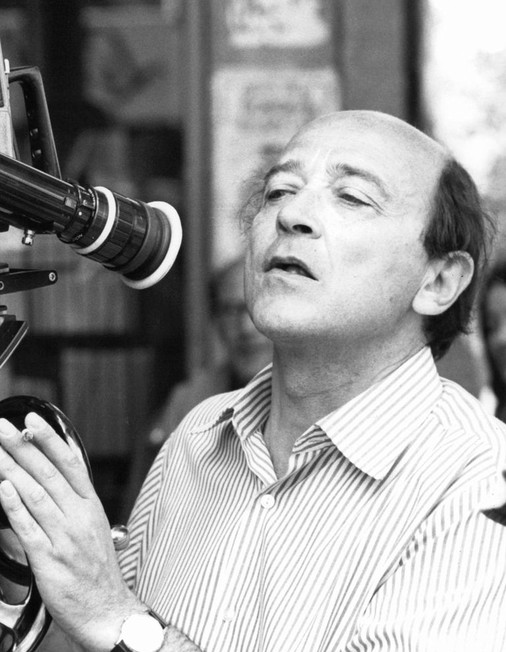
In June 1939 Karel Reisz arrived in England aged 12 years speaking almost no English, as one of the 669 children saved by Sir Nicholas Winton [see entry]. Leighton Park, a Quaker boarding school near Reading where his brother Pavel was a pupil, agreed to be his guarantor. In 1943, aged 17, he trained with the RAF and joined a Czechoslovak squadron where he got his wings three weeks before the end of the war. Reisz was repatriated to Prague with his squadron but on finding that his parents had not survived, deserted and made his way back to England. He gained a scholarship to read chemistry at Emmanuel College, Cambridge before becoming a supply teacher in London for two years.
He wrote film reviews for the Oxford Film Society magazine Sequence and got to know Lindsay Anderson. In 1953 Reisz published a book The Technique of Film Editing which is still in print. He left teaching to become the first programme director at the National Film Theatre. There Reisz teamed up with Anderson and Tony Richardson to launch its “Free Cinema” sessions which promoted the work of young film makers, including themselves. They were social documentaries emphasising the importance of the everyday. The Free Cinema term soon came to define a new style of British film-making, characterised by daring works that tackled gritty, working class themes. Reisz’s films were Momma Don’t Allow (1955) a portrait of a North London jazz club co-directed with Tony Richardson and We are the Lambeth Boys (1958), a sympathetic study of a youth club in London. The second was sponsored by the Ford Motor Company where he had become their films officer.
One by one the leaders of Free Cinema went into feature films. In 1960 Reisz made Saturday Night and Sunday Morning for Woodfall, a production company formed by Richardson with the playwright John Osborne. An adaptation of Alan Sillitoe’s novel of East Midlands working-class life starring Albert Finney, it started a new chapter in British cinematography. Reisz went on to produce Lindsay Anderson’s first feature, This Sporting Life (1963), but was very particular about his choice of subject to direct, and declared that he would rather not work at all than go ahead with a project in which he was less than fully engaged.
As a consequence, the list of feature films he made is not vast, completing only nine over the next 30 years. His second feature film was Night Must Fall (1964) also starring Finney, which was followed in 1966 by Morgan – a Suitable Case for Treatment starring David Warner. Isadora followed in 1968, starring Vanessa Redgrave with a screenplay by Melvyn Bragg. In America he directed The Gambler (1974) starring James Caan and Who’ll Stop the Rain (1978) with Nick Nolte.
Back in Britain in 1981 Reisz realised a long cherished project, The French Lieutenant’s Woman, based on the John Fowles novel adapted by Harold Pinter and featuring an Oscar-winning performance from Meryl Streep. There followed two more American productions, Sweet Dreams (1985) a biography of the country singer Patsy Cline that starred Jessica Lange, and in 1990 his last feature film, Everybody Wins, from a screenplay by Arthur Miller.
In the 1990s Reisz devoted himself to theatre direction in London (notably at the Almeida), Dublin and Paris. He won special praise for his productions of work by Pinter and Samuel Beckett. Two of his three sons by his first wife have followed in his footsteps: Barney is a TV and film producer, Toby is a short film writer and director. His second wife, whom he married in 1963, was the American actor Betsy Blair.
Karel Reisz obituary | The Guardian
BFI Screenonline: Reisz, Karel (1926-2002) Biography
Karel Reisz (notablebiographies.com)
Karel Reisz, an Anglo-Czech gentleman (progetto.cz)
The British Entertainment History Project | interview with Karel Reisz |
BBC Radio 4 – Great Lives, Series 28, Karel Reisz
EUGENE (EVŽEN) ROSENBERG architect
(born 24 February 1907 Topol’čany, Slovakia, died 21 November 1990 London)
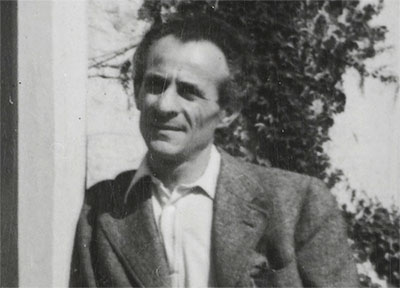
From 1920-28 Rosenberg studied engineering in Bratislava, Brno and Prague. In 1929 he worked with Le Corbusier in Paris before becoming an architecture student of Josef Gočár at the Academy of Fine Arts in Prague. Then for a while he worked for Havlíček & Honzík on the General Pension Institute building (Budova Všeobecné penzijní pojišťovny) in Žižkov where he learned to use ceramic tile cladding which he later used in Britain.
In 1934 Rosenberg set up his own practice in Prague from where he designed a villa for dr Viktor Mokrý in his Slovak home town. In Prague he designed the Erhart Café in Letná and an apartment building with an arcade below (Štěpánská pasáž). From 1935-7 he designed apartment blocks in Letohradská, Antonínská and Schnirchová in Holešovice.
In 1939 Rosenberg left for Britain following the Nazi occupation of Czechoslovakia. He was interned and sent to Australia, returning to London in 1942. In 1944 he created the architectural practice Yorke, Rosenberg Mardall (YRM) with partners F.R.S. Yorke and Cyril Mardall. The firm specialised in hospitals, schools, colleges, offices and industrial buildings. This included Gatwick Airport terminal (1958) to which they added the north terminal built in 1984-88.
Rosenberg designed St Thomas’ Hospital (1966-75) opposite the Houses of Parliament, a thirteen storey block (now North Wing) with white-tiled cladding. Now a listed building, Rosenberg’s design for the Belfast synagogue (dedicated in 1964) is unusual both in its circular shape and that there is no women’s gallery, instead it has separate raised sections. The roof is held up by beams that form a star of David.
In the 1960s Rosenberg became involved in planning a campus for the newly created Warwick University. According to him “the bond between contemporary art and architecture is not easy to define, but I believe they are complementary – that architecture is enriched by art and that art has something to gain from its architectural setting.” He persuaded the university’s vice-chancellor to develop an art collection and was given £6,000 to buy works of art for the university.
Rosenberg visited exhibitions at the Whitechapel Art Gallery to buy works by recent graduates, fellow emigrés and important European artists. He was also an avid collector of contemporary and 20th century art. A small collection of paintings and prints from his collection was bequeathed to the Warwick University on the death of his widow Penelope.
Following his retirement, Rosenberg worked on a book that he hoped would inspire alliances between artists and architects. Architect’s Choice, Art in Architecture in Great Britain since 1945 was published posthumously in 1992 by Thames and Hudson.
IRENA SEDLECKÁ sculptor
(born 7 September 1928 Plzeň, died 4 August 2020)
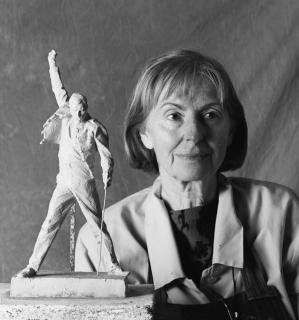
From 1945 Irena studied sculpture at the Academy of Arts in Prague and graduated in 1949. Subsequent state commissions, all in the socialist realist style, included a memorial for the victims of the Nazi regime in Moravia and a statue of Julius Fučík in Plzeň. Together with her first husband, Ludwig Kodym, Irena executed all of the reliefs for the walls and the stone figures on the roof of the new Lenin Museum in Prague. In 1966 she escaped by car from communist Czechoslovakia with her second husband, Stefan Drexler, and three children via Yugoslavia and Italy to France. After a difficult time settling in Britain they divorced.
Irena became involved in a series of “talking heads” for marketing purposes which involved projecting film on a sculpted head. Through this she met many personalities for whom she then sculpted busts. These included Lord Lichfield, Jackie Stewart, Paul Eddington, Nigel Hawthorne, Kenneth Williams, Nicolas Parsons, Ken Dodd, Jimmy Edwards, David Bellamy and Gordon Kay.
Among her larger full-length statues is one of Beau Brummel in Jermyn Street, London and those of Conan Doyle and Emily Dickinson commissioned by Felix Dennis. Irena is also known for a three-metre statue of Freddie Mercury, singer in the band Queen that stands overlooking Lake Geneva in Montreux, Switzerland.
In 1996 Irena married Franta Bělský [see separate entry], a Czech sculptor who had emigrated to England in 1948 and introduced her to the Royal Society of Sculptors. After the Velvet Revolution, Sedlecká and Bělský became regular visitors to Prague where she created pieces for the National Theatre. However, the end of communism led to some of her early works being melted down, including the Fučík statue, while those on the Lenin Museum were sold overseas as garden ornaments.
Jarmila Karas recollected in the BCS Review “For all the fame and constant demand for her work, Irena was a very private, humble woman, generous to a fault with a wonderful sense of humour.”
A personal tribute by Peter Cannon-Brookes
Aleksandra Mir – Freddie on the Plinth – Irena’s Story
The Franta Belsky and Irena Sedlecka Atelier Sculpture sale – 25th April 2017 (Mallams Oxford) includes a profile by Peter Cannon- Brookes
Robert William SETON-WATSON historian
(born 20 August 1879 London, died 25 July 1951 Skye)
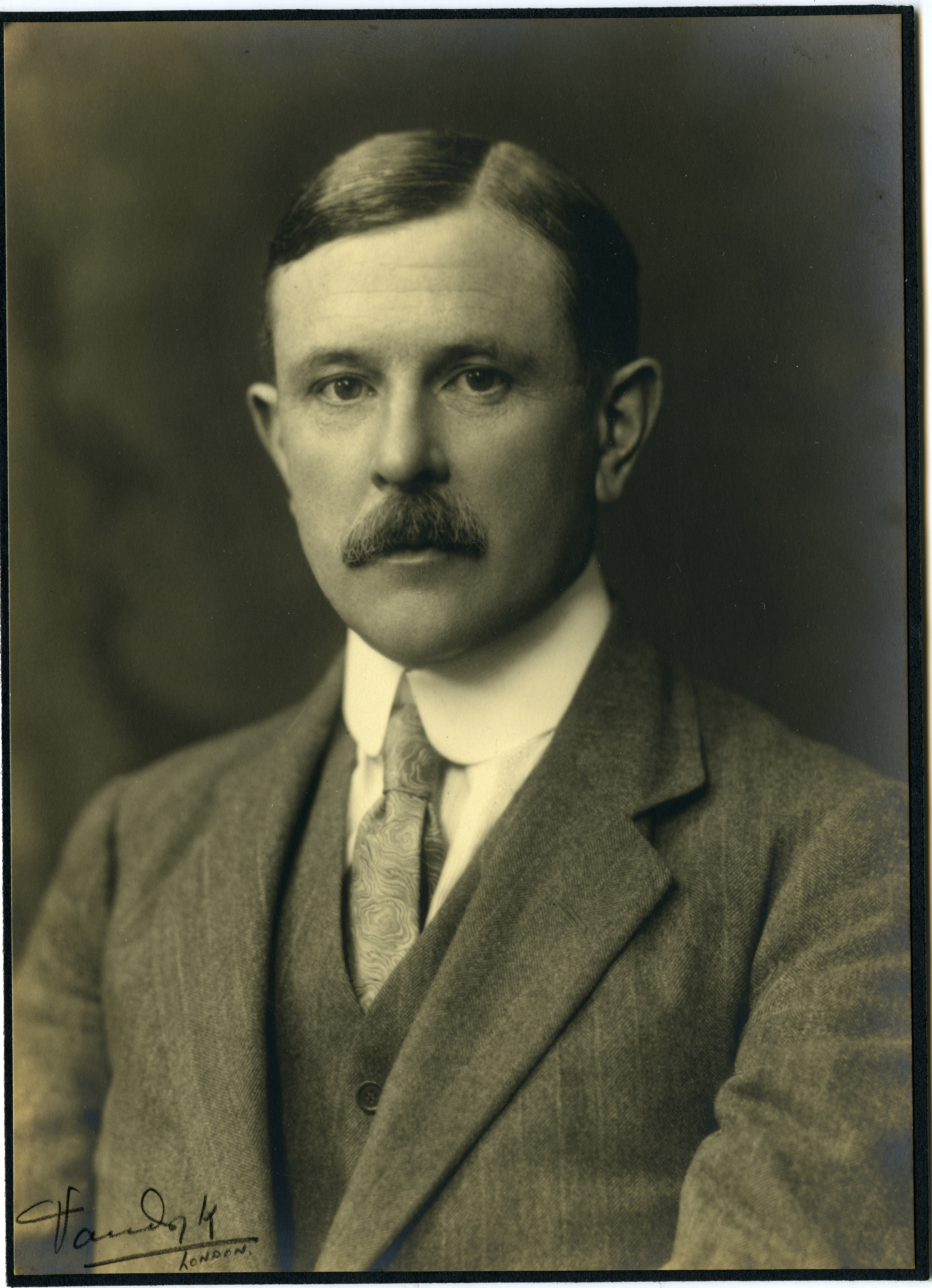
From 1905-1914 Seton-Watson spent time each year in Vienna and travelled extensively within Austria-Hungary. He first met Tomáš Garrigue Masaryk in 1910 after which they stayed in touch. In April 1915 Seton-Watson met Masaryk when he arrived at Charing Cross Station with his daughter Olga, having been advised not to return to Prague. Seton-Watson then became involved in plans for Czech independence, assisting with the English version of Masaryk’s confidential memorandum ‘Independent Bohemia’ and acting as an intermediary with the Foreign Office.
In 1915 Seton-Watson played a leading role in establishing a School of Slavonic Studies as part of King’s College, London (now UCL School of Slavonic & East European Studies). In October that year, Masaryk gave the inaugural lecture ‘The Problems of Small Nations in the European Crisis’. In 1922 Seton-Watson was appointed the first holder of the Masaryk chair in Central European history, a post that he held until 1945 when he was appointed to the new chair of Czechoslovak Studies at Oxford University.
In 1922 he founded The Slavonic Review (now The Slavonic & East European Review) with Bernard Pares and Harold Williams to which he contributed an article ‘Czechoslovakia in its European setting’ (July 1936 vol. 15 no. 43 pp105-120).
In 1931 Seton-Watson brought together 25 essays by prominent Slovaks in Slovakia then and now that covered a wide range of topics to which he contributed an introduction about the post-war problems of Czechoslovakia.
In ‘Britain and the Dictators: A Survey of Post-War British Policy’ (1938), he attacked Neville Chamberlain’s policy of appeasement. After Chamberlain’s resignation, Seton-Watson held posts in the Foreign Research and Press Service (1939–1940) and Political Intelligence Bureau of the Foreign Office (1940–1942).
Seton-Watson’s three children, Hugh, Christopher and Mary, were also historians. In ‘The Making of a New Europe: R.W. Seton-Watson and the last years of Austria-Hungary’ (University of Washington Press, 1981) Hugh and Christopher provide an account of their father’s role in the creation of Europe after the First World War.
Publications
The New Slovakia, R.W. Seton-Watson, Prague (F. Borový) 1924
Slovakia then and now, R.W. Seton-Watson, George Allen & Unwin & Orbis (Czech) 1931
Masaryk in England, R.W. Seton-Watson, Cambridge University Press, 1943
A history of the Czechs and Slovaks, R.W. Seton-Watson, Hutchinson, 1943
25 years of Czechoslovakia, R.W. Seton-Watson, New Europe Publishing Co. Ltd. 1945
R.W. Seton-Watson and his relations with the Czechs and Slovaks: documents 1906-1951 (2 vols) Ústav T.G.Masaryka & Matica Slovenská (trilingual) 1995-6
Tributes to R.W. Seton-Watson: a symposium, The Slavonic & East European Review, June 1952 vol.30 no75 pp331-363
MIROSLAV SIGMUND engineer
(born 10 March 1907 Lutín, Moravia, died 4 March 2004 Newcastle)
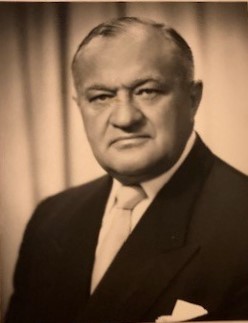
After studying mechanical and electrical engineering, Miroslav joined the family firm, Sigmund Pumps, founded by his grandfather in Lutín. As the political situation worsened, it was decided to move part of the business abroad. In 1937 Miroslav successfully tendered for a British government contract to make firefighting pumps. He and his family left Czechoslovakia in March 1938 and founded Sigmund Pumps (Great Britain) Ltd at the Team Valley trading estate in Gateshead. Miroslav’s brother Jan, still in Lutín, sent machine tools, parts and technical drawings to Gateshead. By August 1939 3,000 pumps had been manufactured at the new factory.
In 1935 the Sigmund family established a new company Chema in Lutín which specialised in filtering equipment against air raids and for gas masks. From his experience as production manager, Miroslav developed a filtration system to protect against poisonous gases for Churchill’s war bunker and underground shelters in London. During the war Sigmund Pumps was one of the firms chosen by the War Office to make parts for the Bren gun. This was a version of the Czech light machine-gun made in Brno that had been adapted by the Royal Small Arms Factory in Enfield.
In 1938 Miroslav started a successful apprentice training scheme which, after the war, was combined with a day release scheme at Gateshead Technical College. Starting with a dozen personnel, at the end of the war Sigmund Pumps employed upwards of 2,000 people in management and on the shop floor.
As the cold war developed, the Ministry of Defence identified the need for a fleet of mobile pumps. Each of the 5,000 Green Goddess trucks were equipped with Sigmund pumps. Production began in 1953 and although the fleet was put into storage, it was brought out during firemen’s strikes in 1977, 2002 and 2003. In the 1950s Miroslav obtained the rights to manufacture small water circulating pumps in Britain with potential for inexpensive domestic central heating systems using slimline pressed steel radiators.
In 1965, having sold and resigned from the original business and its successor, Miroslav bought Combined Optical Industries Ltd (Coil) in Slough. At Coil he developed plastic lenses for cameras and optical instruments and also produced components for the new Polaroid instant camera. Following his retirement in 1974, Miroslav acted as a consultant to various companies until 1982.
After the fall of communism in Czechoslovakia, Miroslav was invited to visit the Sigmund Pumps factory in Lutín where he offered advice on its transition to private enterprise.
Firefighting the Czech way: Sigma’s UK bond BCS Review by Maria Hughes
Tyneside apprentices unite – seven decades on from pioneering training scheme
Tyne and Wear Archives Service Catalogue papers about Sigmund Pumps
VILÉM TAUSKÝ CBE FGSM conductor
(born 20 July 1910 in Přerov, Moravia, died 16 March 2004 Bromley, London)
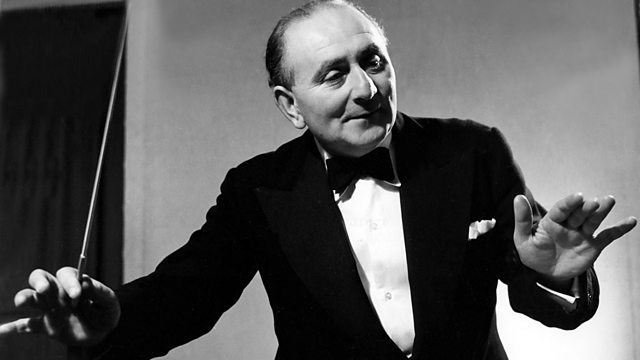
Drawn to music from an early age, Tauský studied at the Brno Conservatoire, where he was influenced by the elderly Leoš Janáček.
He arrived in England in 1940 from France with the Free Czechoslovak Forces in which he had been military band leader and continued his musical activities throughout the war. A detailed account is available here.
From 1945 to 1949 he was musical director of the Carl Rosa Opera Company. In 1951 became music director of Welsh National Opera. From 1956 to 1966 he was principal conductor of the BBC Concert Orchestra and regularly appeared on the radio show “Friday Night is Music Night”. He then became director of opera and head of conducting at the Guildhall School of Music & Drama until 1992.
In 1979 he published his memoirs under the title Vilem Tausky Tells his Story which his wife Peggy Mallett co-authored.
Annette Percy of the Dvořák Society recollects that Vilém Tauský went back to Czechoslovakia twice in the 1970s, both times with her husband Alexander Percy-Holeček. On his first visit in 1974 Vilém conducted three operas, one in Brno, one in Ostrava and one in Olomouc. He also visited his native town of Přerov and was delighted to be reunited with some old friends from his army days in Brno. The following year he conducted Košice Philharmonic three times in various towns in Slovakia. Vilém visited the Czech Republic just twice after the Revolution. Brenda Rayson was instrumental in arranging for Vilém’s ashes to be interred in Ustřední hřbitov in Brno where his grave is between those of the Brno conductor Jiři Pinkas and the prima ballerina Zora Šemberová who danced Juliet in the world premiere of Prokofiev’s Romeo and Juliet in Brno in 1938.
Vilem Tausky obituary The Guardian
VILEM TAUSKY C.B.E. F.G.S.M. (b. 1910) (musicweb-international.com)
The Dvořák Society published Vilém Tauský CBE FGSM 1910-2004, edited by Richard Beith in 2007 as one of its Occasional Publications. This 286 page book covers Tauský’s life in music in great detail. Vilém Tauský CBE FGSM 1910–2004 | The Dvořák Society (dvorak-society.org)
JOHN TUSA OBE British Bata manager
(born 22 February 1909 Moravská Nová Ves, Moravia, died 30 July 1994 Poole, England)
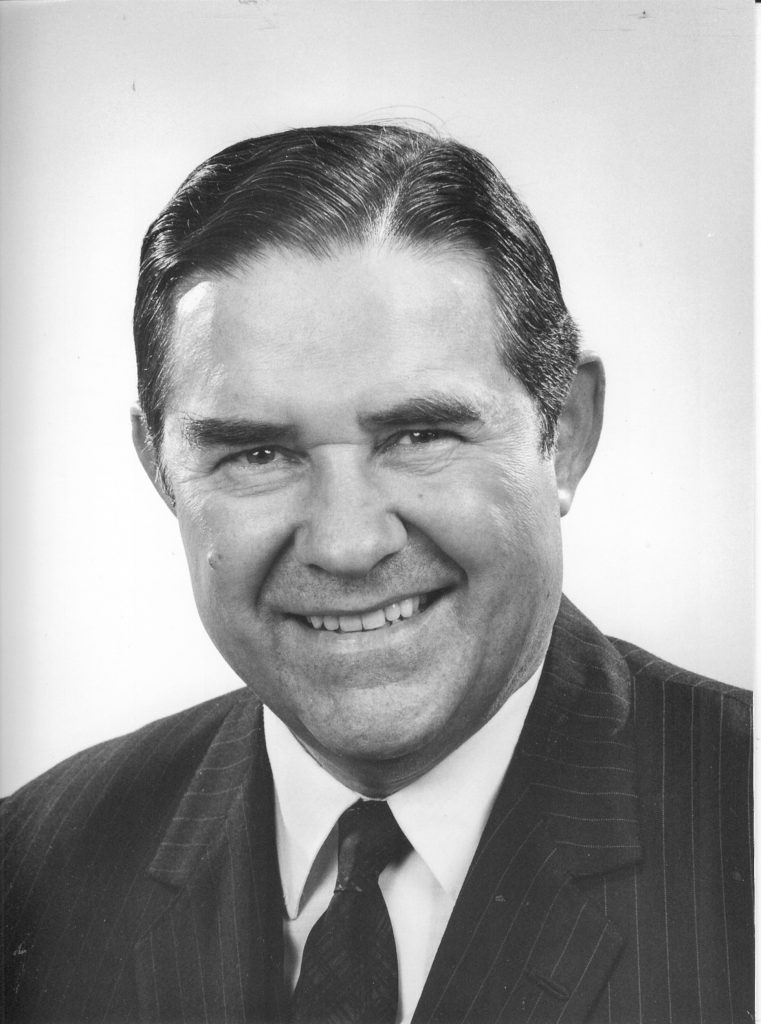
In 1939 Jan Tůša, was appointed General Manager of the British Bata Shoe company in East Tilbury, Essex, an offshoot of the parent Bata organisation in Zlín, Czechoslovakia. Its distinctiveness was to turn the previous cobblers’ craft of shoe making into a mass production business which could put affordable shoes onto the previously unshod feet of millions.
Since its establishment in England in 1933, British Bata was managed by a key core of some 30 or 40 Czech senior managers. Tusa was one of them. He immediately anglicised his name and spelling to John Tusa as he was usually known thereafter. He and his family became British Citizens on 17 January 1947.
From its creation in 1933, the East Tilbury factories provided significant employment for local Essex people. A garden city was planned, with an initial 300 houses designed by top Czech architects of the time; the first street to be completed being Bata Avenue. The actual factory buildings, landmarks to this day, were designed in the distinctive, preferred Bata “Bauhaus” style much admired and visited by students of architecture.
The company also had its own hotel, farm, shops, cinema, swimming pool, football ground and other sporting facilities. Play areas were supplied for the children of the workers and a school and college were built. The Bata organisation had always been based on a strongly paternalistic philosophy.
The Second World War was a period of huge stress for the young company and the young manager. It survived by meeting large government orders for army boots, “wellington” boots and gym shoes for the armed forces. Thereafter, John Tusa led it into years of major expansion becoming a significant High Street presence with more than 400 shops at its peak. One of his trademark management practices was to visit Bata high street shops every week.
The “Bata Estate” itself grew steadily throughout the 1950s and1960s using British architects becoming increasingly identified as “East Tilbury”.
John Tusa became responsible for Bata subsidiaries in West Africa and throughout the West Indies including Jamaica. An indefatigable traveller, he regularly returned with orders for hundreds of thousands of shoes for East Tilbury to export.
Trained by the founder of the Bata Organisation, Tomáš Bat’a himself, John Tusa’s management style was intensely personal. Long before “management-walking-around” was invented, he inspected the entire production facility every week. It was said that he knew the names of at least a third of the 3,000 employees at the East Tilbury facilities.
A leading member of the British shoe industry, he raised record sums for the industry-wide charity as President of the Footwear Benevolent Fund. During the devastating floods of the east coast in 1953, John Tusa’s work in harnessing Bata resources in the relief effort earned East Tilbury a royal visit by the Queen. He was subsequently appointed OBE for his efforts in the crisis.
The Bata Shoe Company believed that controlling the supply of its raw materials meant that its factories received the right qualities of material to meet the ever changing needs of the industry and that the right quantities would be available at the right time. With this in mind they bought other UK companies as well as opening smaller factories in Maryport, Cumbria (1940) and Cumnock, Scotland (1964). These also formed an important part of John Tusa’s management and business portfolio.
John Tusa retired in 1969 having built up British Bata into a significant national High Street retail presence with wide international links. His preferred pastimes were playing golf and tennis and loyally supporting West Ham United. Bata supplied them with football boots and they occasionally trained at the East Tilbury pitch.
In April 1993 the Bata estate and factory at East Tilbury became a conservation area. The main factory buildings remain a striking landmark on the banks of the Thames estuary A Reminiscence and Resource Centre opened in April 2002 within the local library to house the memories of the people who have been a part of this community, as well as photographs and artefacts donated by them. It also covers all of the subsidiaries in the UK. Bata closed the Tilbury factory in 2005, moving most of its manufacturing to Malaysia.
by Sir John Tusa (his son) for an interview with the Czech Embassy in London click here
The town that Bata built: a modernist marvel on the marshes of Essex | The Guardian
East Tilbury: a Czech modernist Utopia on the Thames marshes | Radio Prague International
Bata Heritage Centre – The life and times of the British Bata Shoe Co Ltd
Life on Essex’s ‘forgotten’ utopian estate in the shadows of a shoe factory – Essex Live
GERTA VRBOVÁ-HILTON MD, DSc neuroscientist
(born 28 November 1926 Trnava, Slovakia, died 2 October 2020 London)
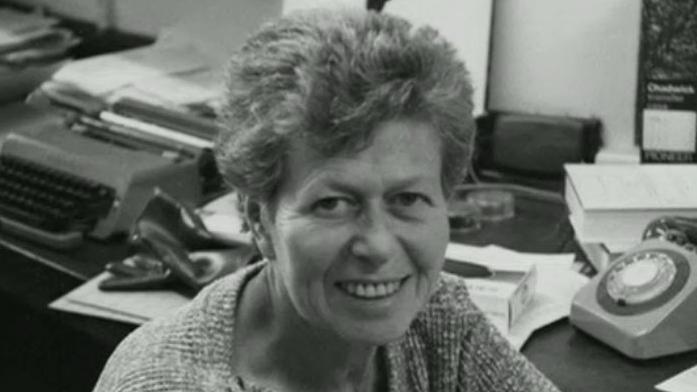
When in 1939 12-year-old Gerta was excluded from school because she was Jewish, Rudi Vrba, an old school friend who was two years her senior, helped with her studies. At the end of the war they were reunited and moved to Prague, where she read medicine at Charles University and he studied chemistry. They were married in 1947 and had two daughters but divorced. In 1957 Gerta met Sidney Hilton, a British physiologist, at a conference in Prague but the Czechs would not allow them to marry.
The following year in order to attend a conference in Warsaw, Gerta had mistakenly been issued with a visa that allowed her to return to Prague via any other country. After the meetings she walked through the Tatra mountains into Czechoslovakia to a rendezvous with her two daughters, then aged six and four. Together they walked back to Poland where a friend drove them to Warsaw from where they flew to Copenhagen and on to London.
Despite having a job offer from the Royal Free Medical School in London, Gerta had no visa and they were deported to Denmark which granted them asylum. In 1959 she was allowed to return to London providing that she and Hilton married within seven days. They had a son Peter and daughter Caroline. Gerta undertook research on muscle properties at the Royal Free and King’s College London and later ground-breaking work on the interaction between nerves and muscles at University College London.
In her latter years Gerta wrote about her life in two volumes. “The burden of my past, the memories of my loving family who perished in the gas chambers of Nazi Germany and the story of my survival are now haunting me and demanding that they be written down so that they should not be irretrievably lost.”
Our first international meeting in Prague BCSA writing competition 2010
A woman with nerves of steel BCS Review by Edward Peacock
Gerta Vrbova obituary The Guardian by her daughter Caroline
The story of a that love could not survive the horrors of the the Holocaust – Mirror Online
Trust and Deceit , Vallentine Mitchell (vmbooksuk.com)
A continuation of Gerta’s autobiography Betrayed Generation: Shattered Hopes and Disillusion in Post War Czechoslovakia is available on Kindle
DOREEN WARRINER OBE
(born 1904 Warwickshire, died 1972 Buckinghamshire)
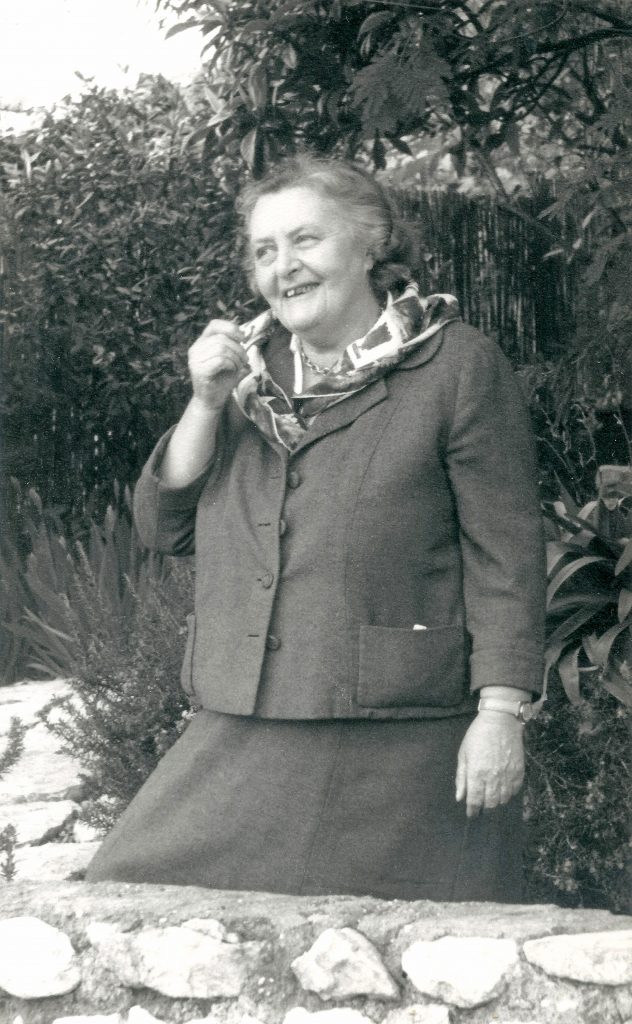
1960s in her garden, courtesy Henry Warriner (her nephew)
At the university of Oxford (St Hugh’s College 1922-6) Doreen gained a first class degree in philosophy, politics and economics followed in 1931 by a PhD at the London School of Economics.
In 1930 she went to Prague to study the economics of Czechoslovak agriculture with many further visits during the 1930s. Following the Munich Agreement, Doreen returned in Prague on 13 October 1938. Through a Quaker representative, Mary Penman, she was introduced to Wenzel Jaksch, the leader of the Sudeten German Social Democrats and a political refugee. Doreen arranged for several large groups Social Democrats to escape to the UK and personally accompanied some on trains headed out of Czechoslovakia to Poland then returned to Prague.
According to her own account: “At the end of October there were said to be 100,000 refugees from the Sudetenland in Czech territory, of which 90,000 were Czechs and 10,000 Sudeten Germans. Most of the Czechs were quartered on the peasants, and the Sudeten Germans were put into camps – that is, in schools, castles or village halls… What changed the whole situation was the British loan; on 4 January 1939, the terms became known. Out of the £10 million loan to the Czech Government, £4 million was a gift, to be used to aid emigration. A special agreement stipulated that up to 5,000 Sudeten refugees should receive £200 per family to cover the cost of transport and settlement.”
As the representative in the Prague office of the British Committee for Refugees from Czechoslovakia (BCRC) it was Doreen who alerted the attention of Nicholas Winton to the plight of Jewish refugee children. Their experience is portrayed in the film One Life, released in 2023. Doreen remained in Prague until 22 April 1939, leaving a month after the Nazi invasion and military occupation of Bohemia and Moravia. By arranging visas and transport out of Prague, she saved the lives of hundreds of Sudeten German Social Democrats and communist refugees as well as women and children.
Following her departure from the occupied city she returned to other wartime duties in the London Ministry of Economic Warfare, the Ministry of Food, and later by the Political Intelligence Department of the Foreign Office. Doreen joined the Middle East Supply Centre based in Cairo in 1943. She served as chief of an UNRRA (United Nations Relief and Rehabilitation Administration) food mission to Yugoslavia from 1944 to 1946,
From 1933 Doreen was an assistant lecturer in economics at the School of Slavonic & East European Studies, University of London. In 1938 she was appointed an honorary lecturer in economics then in 1947 to a full-time lectureship in economic and social studies of Eastern Europe, a reader in 1960 and in 1965 a professorship, shortly before her retirement one year later.
In January 1941 Doreen was awarded an OBE “for services in 1938 and 1939 in connection with refugees leaving Czechoslovakia”.
In 2018 she was posthumously awarded, by the British government, a British Hero of the Holocaust Medal that bears the inscriptions: “In recognition of Doreen Warriner, whose selfless actions preserved life in the face of persecution” and “In the Service of Humanity”.
In 2019 a plaque commemorating Doreen Warriner was unveiled at the entrance to Hotel Alcron where she was based in 1938 and 1939.
Doreen’s private account of her work in Prague, written in June 1939, Winter in Prague, was published posthumously in the Slavonic and East European Review Vol.62.No.2. April 1984 pp 209-240 (available also online through JSTOR).
She kept diaries from 1930 until 1972 that form the heart of Henry Warriner’s book about his aunt, Doreen Warriner’s War, published in 2019; available in paperback from Amazon and on Kindle.
Sir NICHOLAS WINTON MBE humanitarian
(born 19 May 1909 Hampstead, died 1 July 2015 Slough)
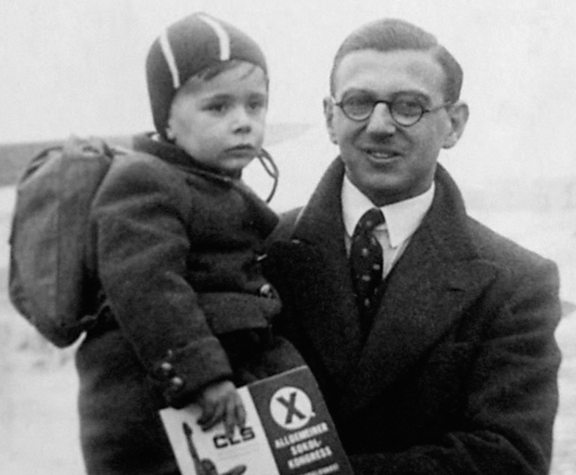
Nicholas Winton supervised the rescue of 669 children, most of them Jewish, from Czechoslovakia on the eve of World War 2.
In November 1938 the House of Commons had approved a measure to allow the entry into Britain of refugees younger than 17, provided they had a place to stay and a deposit of £50 was made for an eventual return to their homeland. Shortly before Christmas 1938 Winton went to Prague where he registered more than 900 children. In January 1939 he returned to London to find foster homes, raise money and arrange transportation.
On March 14, 1939, just hours before Hitler’s troops occupied Bohemia and Moravia and made them a German “Protectorate,” the first 20 children left Prague on a train. Survivors told of searing scenes on the station platform in the final moments before departure as children sobbed and pleaded not to be sent away and parents faced giving up their children.
Winton and his colleagues arranged for eight more trains, crossing the Third Reich through Nuremberg and Cologne to the Hook of Holland, then across the North Sea by boat to Harwich and on by British rail to the Liverpool Street Station in London. But only seven of the eight trains made it, the last in early August, bringing the total rescued to 669. About 250 children, the largest group, were on board the last train out, on Sept. 1, 1939. On that day, however, Hitler invaded Poland, all borders controlled by Germany were closed and Mr. Winton’s rescue efforts came to an end.
His work was unknown for nearly 50 years, until 1988 when he was invited to the BBC television programme That’s Life! as a member of the audience. The host of the programme, Esther Rantzen, asked whether anybody in the audience owed their lives to Winton, and if so, to stand [see video link below]. Among the children he saved were the future film director Karel Reisz and Lord Dubs.
In 2003, Winton was knighted for “services to humanity, in saving Jewish children from Nazi Germany occupied Czechoslovakia”.
On Sept. 1, 2009, 70 years after the onset of the war halted the rescue operations, a special train with a locomotive and carriages from the 1930s left Prague to re-create the perilous 1939 journeys. On board were some of the original Winton’s Children and many of their descendants, whose numbers now exceed 6,000.
Sir Nicholas Winton is a comprehensive website with personal items and documents
1988 Holocaust hero Nicholas Winton on That’s Life – YouTube
Children’s saviour receives a knighthood by Angela Spindler-Brown
Sir Nicholas Winton obituary | Holocaust | The Guardian
“The two stories made it possible”: Petr Sís discusses Nicky & Vera | Radio Prague International
